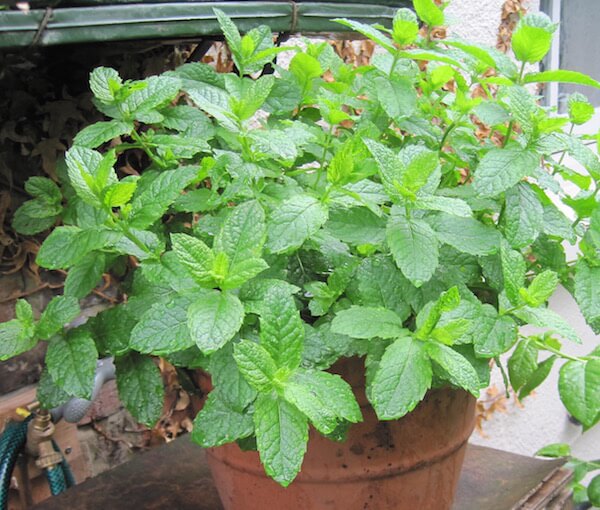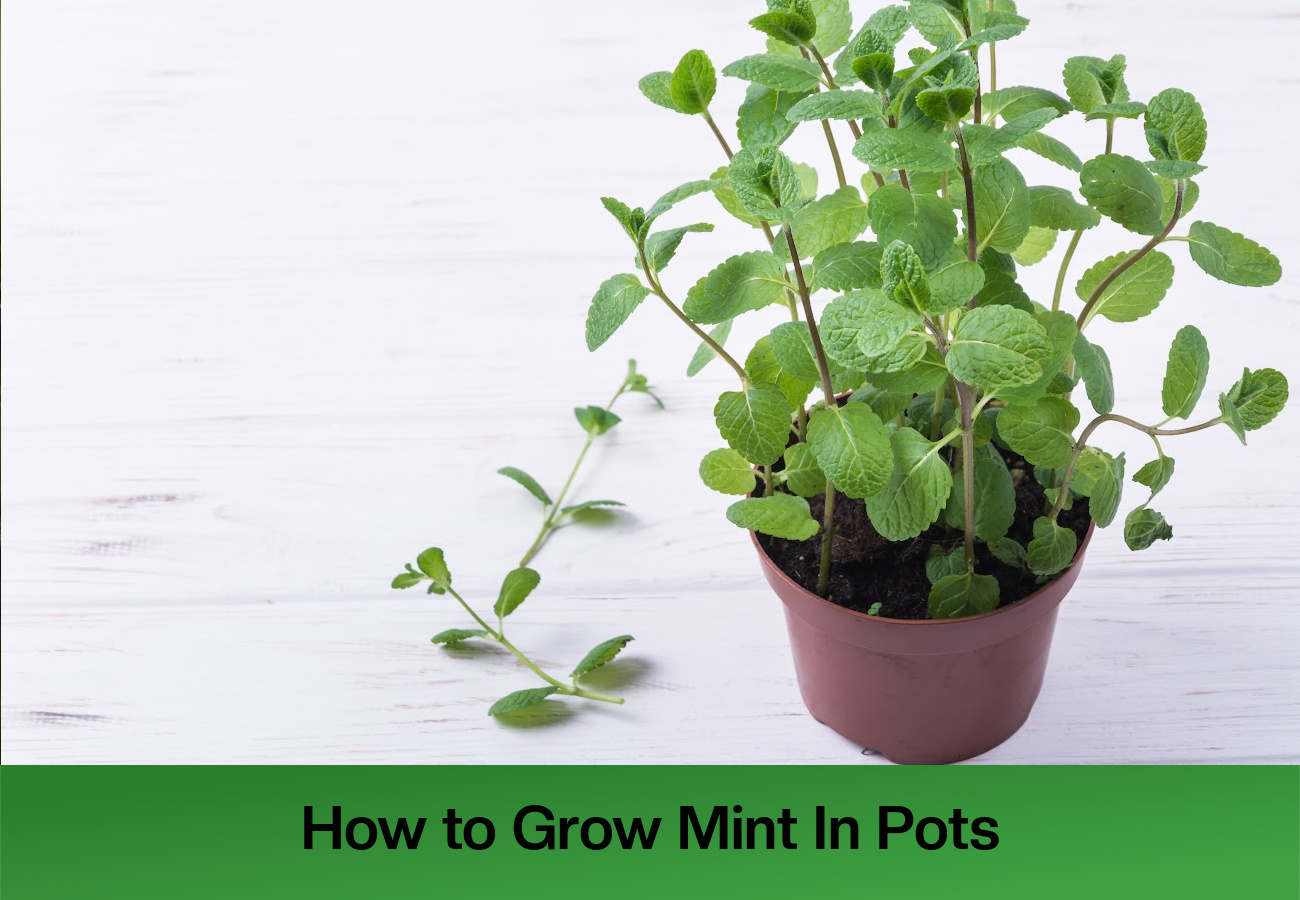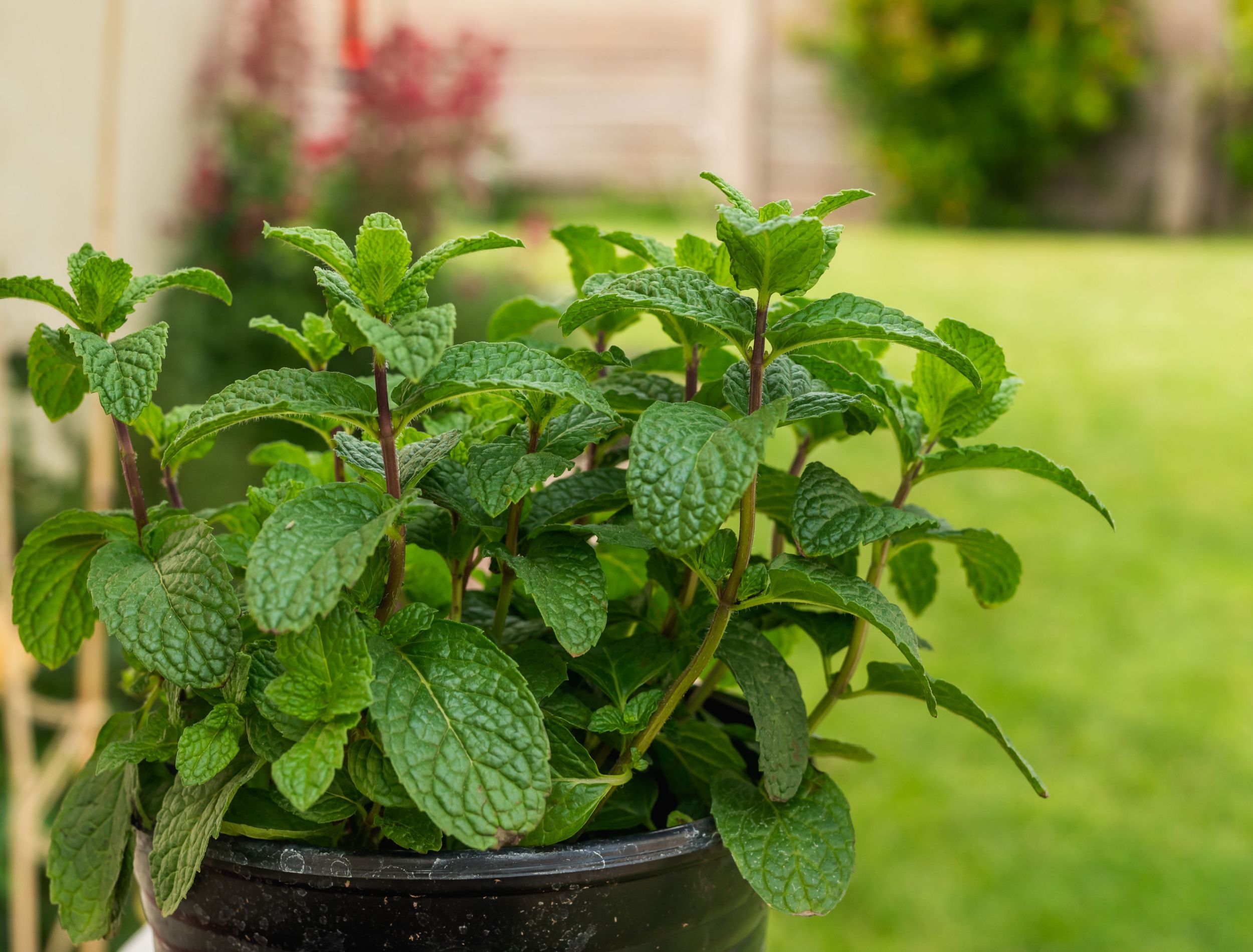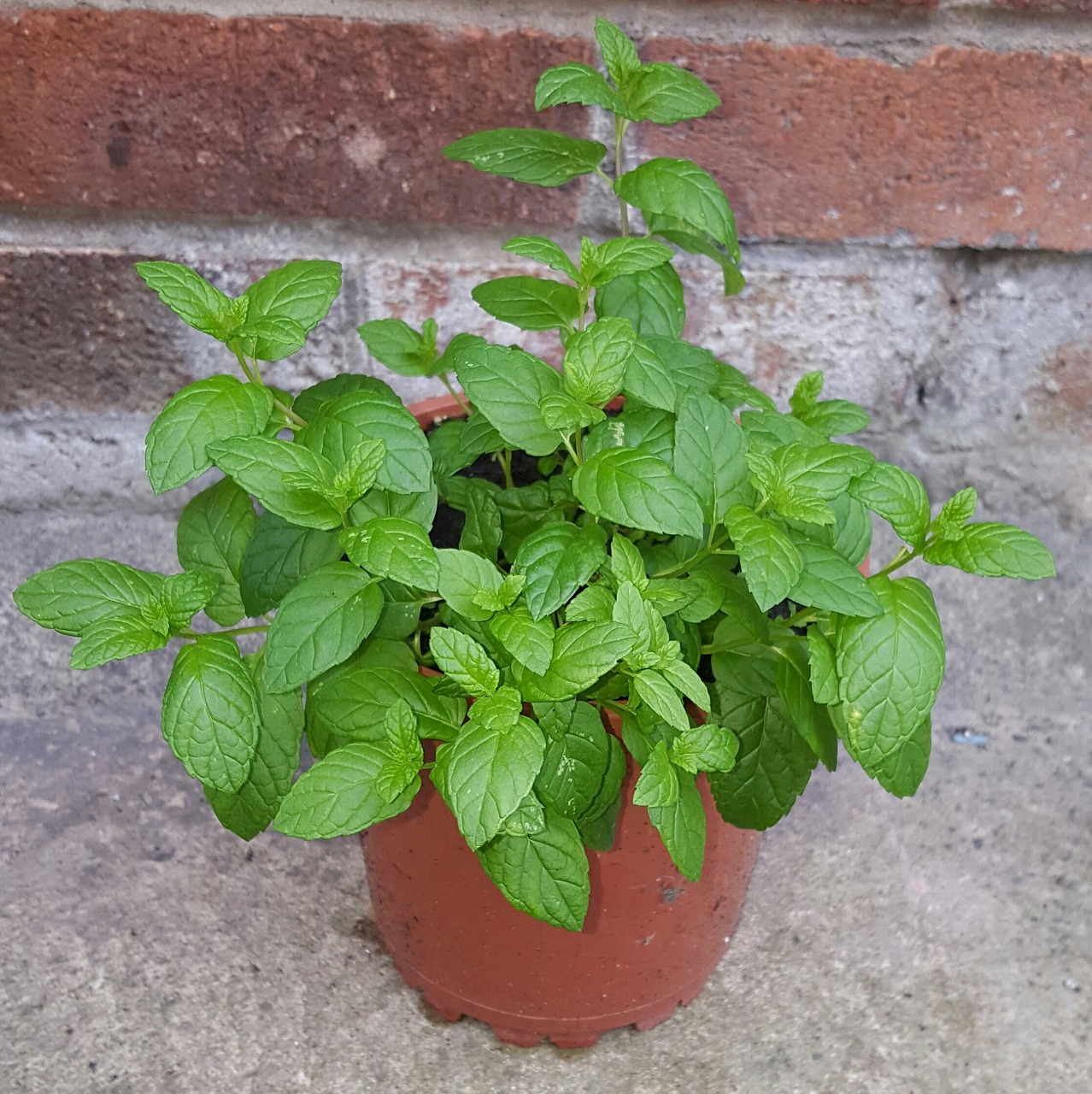Why Mint is a Great Choice for Container Gardening
Mint is an ideal herb for container gardening due to its hardiness, fragrance, and culinary uses. This versatile plant can thrive in containers with proper care, making it a great choice for gardeners of all levels. One of the primary benefits of growing mint in pots is its ability to tolerate a range of conditions, from partial shade to full sun. Additionally, mint is a low-maintenance herb that requires minimal care, making it perfect for busy gardeners.
Another advantage of growing mint in containers is its fragrance. Mint’s distinctive aroma can be released by simply brushing against the leaves, making it a great addition to any garden or indoor space. Furthermore, mint is a popular ingredient in many culinary dishes, from teas and cocktails to salads and desserts. By growing mint in a pot, you can have a constant supply of fresh mint leaves to use in your favorite recipes.
When it comes to planting mint in a pot, it’s essential to choose a container that is at least 6-8 inches deep to accommodate the herb’s deep roots. Mint prefers well-draining soil and partial shade to full sun, making it a great choice for containers placed on patios, balconies, or indoor windowsills. With proper care, mint can thrive in containers and provide a bountiful harvest of fresh leaves throughout the growing season.
In addition to its many benefits, mint is also a great choice for container gardening due to its ability to attract pollinators and other beneficial insects. By growing mint in a pot, you can create a welcoming environment for bees, butterflies, and other pollinators, which can help to support the local ecosystem.
Overall, mint is an excellent choice for container gardening due to its hardiness, fragrance, and culinary uses. By following a few simple care tips and choosing the right container, you can enjoy a bountiful harvest of fresh mint leaves and add a touch of elegance to your garden or indoor space.
Choosing the Right Mint Variety for Your Container Garden
With over 600 varieties of mint, selecting the right one for your container garden can be a daunting task. However, by understanding the unique characteristics of each variety, you can choose the perfect mint for your needs. Peppermint, spearmint, and chocolate mint are three of the most popular varieties of mint, each with its own distinct flavor and aroma.
Peppermint (Mentha piperita) is one of the most widely recognized varieties of mint, known for its strong, refreshing flavor and aroma. It is a hardy perennial that grows up to 3 feet tall and has dark green leaves with reddish-purple stems. Peppermint is a great choice for planting mint in a pot because it is easy to grow and can thrive in a variety of conditions.
Spearmint (Mentha spicata) is another popular variety of mint, known for its milder flavor and fragrance than peppermint. It is a hardy perennial that grows up to 2 feet tall and has bright green leaves with pinkish-white flowers. Spearmint is a great choice for container gardens because it is compact and can thrive in partial shade.
Chocolate mint (Mentha × piperita f. citrata ‘Chocolate’) is a unique variety of mint that has a distinctive chocolate-like flavor and aroma. It is a hardy perennial that grows up to 2 feet tall and has dark green leaves with brownish-purple stems. Chocolate mint is a great choice for container gardens because it is a compact variety that can thrive in partial shade.
When selecting a mint variety for your container garden, consider the amount of sunlight and water the plant will receive. Most mint varieties prefer partial shade to full sun and consistent moisture. Also, consider the flavor and aroma you prefer, as well as the size and growth habit of the plant.
Some other factors to consider when choosing a mint variety include its hardiness zone, growth rate, and potential for invasiveness. Some mint varieties, such as peppermint and spearmint, can be invasive and spread quickly, while others, such as chocolate mint, are more compact and well-behaved.
By choosing the right mint variety for your container garden, you can enjoy a bountiful harvest of fresh mint leaves and add a touch of elegance to your outdoor or indoor space.
How to Plant Mint in a Pot for Optimal Growth
Planting mint in a pot can be a straightforward process if you follow a few simple steps. To ensure optimal growth, it’s essential to choose the right pot size, soil, and location for your mint plant.
When selecting a pot for your mint plant, choose one that is at least 6-8 inches deep and has good drainage holes. Mint prefers well-draining soil, so a pot with a built-in water reservoir or a layer of small rocks at the bottom can help prevent waterlogged soil.
The next step is to select a high-quality potting soil that is specifically designed for herbs. A well-draining potting soil with a pH between 6.0 and 7.0 is ideal for mint. Avoid using garden soil from your outdoor garden, as it can compact and prevent proper drainage in a pot.
Once you have your pot and soil, it’s time to plant your mint. Start by gently removing the mint plant from its container and loosening the roots. Place the mint plant in the pot, making sure the crown (where the stem meets the roots) is level with the soil surface. Fill in the pot with soil, gently firming it around the roots as you go.
After planting, water your mint plant thoroughly to settle the soil. Make sure the pot has good drainage holes to prevent waterlogged soil. Mint prefers partial shade to full sun, so choose a location that receives at least 4-6 hours of direct sunlight per day.
When it comes to planting mint in a pot, proper drainage and sunlight are crucial for optimal growth. Mint can be susceptible to root rot if the soil is too wet, so make sure the pot has good drainage holes and the soil is well-draining. With proper care, your mint plant should thrive in its new pot and provide a bountiful harvest of fresh leaves.
In addition to choosing the right pot and soil, it’s also essential to consider the temperature and humidity levels when planting mint in a pot. Mint prefers temperatures between 60-70°F (15-21°C) and humidity levels around 50-60%. Avoid placing your mint plant near heating or cooling vents, fireplaces, or drafty windows.
By following these simple steps and providing your mint plant with the right conditions, you can enjoy a thriving and fragrant mint plant in your container garden.
Essential Care Tips for Mint in Containers
Mint is a relatively low-maintenance herb, but it still requires regular care to thrive in containers. Proper watering, fertilizing, and pruning are essential to promote healthy growth and prevent common problems.
Watering is one of the most critical aspects of mint care. Mint prefers moist soil, but it can be susceptible to root rot if the soil is too wet. Check the soil daily, and water only when the top inch of soil feels dry to the touch. Avoid getting water on the leaves to prevent fungal diseases.
Fertilizing is also important for mint growth. Use a balanced, water-soluble fertilizer (20-20-20) once a month to promote healthy growth. You can also use a fertilizer specifically formulated for herbs, which may contain additional nutrients like iron and magnesium.
Pruning is essential to control mint’s aggressive growth and promote bushy growth. Pinch off flower buds as they form to encourage leaf growth, and trim back long stems to maintain shape. Regular pruning will also help prevent mint from becoming leggy and promote a fuller plant.
Common pests that can affect mint in containers include aphids, whiteflies, and spider mites. Check your plants regularly for signs of infestation, and treat promptly with insecticidal soap or neem oil. Regular pruning and good air circulation can also help prevent pest problems.
Diseases like root rot, leaf spot, and powdery mildew can also affect mint in containers. Prevent these problems by providing good air circulation, watering carefully, and avoiding excessive fertilizer. Treat fungal diseases promptly with a fungicide, and remove infected leaves or stems to prevent the disease from spreading.
By following these essential care tips, you can keep your mint plant healthy and thriving in its container. Remember to monitor your plant regularly, and adjust your care routine as needed to ensure optimal growth.
In addition to regular care, it’s also important to consider the specific needs of your mint variety. Some mint varieties, like peppermint and spearmint, are more aggressive and may require more frequent pruning. Others, like chocolate mint, may be more sensitive to temperature fluctuations and require more protection.
By providing the right care and attention, you can enjoy a bountiful harvest of fresh mint leaves from your container garden. Whether you’re using your mint in cooking, herbal remedies, or as a decorative element, proper care is essential to get the most out of your plant.
Common Mistakes to Avoid When Growing Mint in Pots
While mint is a relatively easy herb to grow in containers, there are some common mistakes that can lead to plant failure. By avoiding these mistakes, you can ensure a healthy and thriving mint plant.
One of the most common mistakes when growing mint in pots is overwatering. Mint prefers moist soil, but it can be susceptible to root rot if the soil is too wet. Check the soil daily, and water only when the top inch of soil feels dry to the touch. Avoid getting water on the leaves to prevent fungal diseases.
Underwatering is another common mistake that can lead to mint plant failure. Mint needs consistent moisture to thrive, especially when it’s producing new growth. Check the soil daily, and water when the top inch of soil feels dry to the touch.
Inadequate sunlight is another common mistake that can affect mint growth. Mint prefers partial shade to full sun, depending on the variety. Make sure to place your mint plant in a location that receives at least 4-6 hours of direct sunlight per day.
Using a pot that is too small is another common mistake that can lead to mint plant failure. Mint has a deep root system and needs room to grow. Choose a pot that is at least 6-8 inches deep and has good drainage holes.
Not pruning mint regularly is another common mistake that can lead to plant failure. Mint can become leggy and produce fewer leaves if it’s not pruned regularly. Pinch off flower buds as they form to encourage leaf growth, and trim back long stems to maintain shape.
By avoiding these common mistakes, you can ensure a healthy and thriving mint plant. Remember to monitor your plant regularly, and adjust your care routine as needed to ensure optimal growth.
In addition to avoiding these common mistakes, it’s also important to consider the specific needs of your mint variety. Some mint varieties, like peppermint and spearmint, are more aggressive and may require more frequent pruning. Others, like chocolate mint, may be more sensitive to temperature fluctuations and require more protection.
By providing the right care and attention, you can enjoy a bountiful harvest of fresh mint leaves from your container garden. Whether you’re using your mint in cooking, herbal remedies, or as a decorative element, proper care is essential to get the most out of your plant.
When planting mint in a pot, it’s essential to choose a variety that is well-suited to container gardening. Some mint varieties are more compact and produce fewer roots, making them ideal for small pots. Others may be more aggressive and require larger pots to accommodate their root system.
Using Mint from Your Container Garden in Cooking and Herbal Remedies
Mint is a versatile herb that can be used in a variety of dishes, from teas and salads to desserts and drinks. When grown in a container, mint can be harvested fresh and used in a variety of ways.
One of the most popular uses for mint is in teas. Mint tea is a refreshing and calming drink that can be made by steeping fresh mint leaves in hot water. You can also add mint to other teas, such as green tea or black tea, for a unique flavor.
Mint is also a great addition to salads. You can chop fresh mint leaves and add them to green salads, fruit salads, or grain salads for a burst of fresh flavor. Mint pairs well with a variety of ingredients, including citrus fruits, berries, and nuts.
In addition to its culinary uses, mint can also be used in herbal remedies. Mint has natural digestive properties and can be used to soothe stomach upset or indigestion. You can make a mint tea by steeping fresh mint leaves in hot water and then straining the liquid.
Mint can also be used in skincare products. Mint has natural anti-inflammatory properties and can be used to soothe skin irritations or reduce redness. You can make a mint face mask by mixing fresh mint leaves with a carrier oil, such as coconut oil or olive oil, and then applying the mixture to your skin.
When using mint from your container garden, be sure to harvest the leaves regularly to encourage new growth. You can also dry or freeze mint leaves to preserve them for later use.
Incorporating mint into your cooking and herbal remedies can add a fresh and unique flavor to your dishes. Whether you’re using mint in teas, salads, or skincare products, this versatile herb is sure to become a staple in your container garden.
By growing mint in a container, you can have a constant supply of fresh mint leaves to use in your cooking and herbal remedies. With its natural digestive properties and anti-inflammatory properties, mint is a great addition to any container garden.
When planting mint in a pot, be sure to choose a variety that is well-suited to container gardening. Some mint varieties are more compact and produce fewer roots, making them ideal for small pots. Others may be more aggressive and require larger pots to accommodate their root system.
Propagating Mint from Cuttings or Division
Propagating mint from cuttings or division is a great way to share plants with friends and create new varieties. Mint is a hardy herb that can be easily propagated using a few simple techniques.
One of the easiest ways to propagate mint is by taking cuttings. Cuttings can be taken from the tips of the stems, just above a node. Remove any lower leaves and place the cutting in a glass of water or a propagation tray filled with water. Roots should develop within a few days, and the cutting can be transplanted into a pot filled with well-draining soil.
Another way to propagate mint is by division. Division involves separating the roots of a mature mint plant into smaller sections, each with its own set of leaves and roots. This method is best done in the spring or fall, when the plant is dormant. Simply dig up the entire plant, separate the roots, and replant the sections in new pots filled with well-draining soil.
When propagating mint, it’s essential to choose healthy, disease-free plants. Make sure to inspect the plants for any signs of pests or diseases before taking cuttings or dividing the roots.
Propagating mint can be a fun and rewarding experience, and it’s a great way to share plants with friends and family. By following these simple techniques, you can create new mint plants and enjoy the many benefits of this versatile herb.
In addition to propagating mint, you can also use this technique to create new varieties of mint. By crossing different mint varieties, you can create unique and interesting flavor profiles. This is a great way to experiment with new flavors and create your own signature mint varieties.
When planting mint in a pot, make sure to choose a variety that is well-suited to container gardening. Some mint varieties are more compact and produce fewer roots, making them ideal for small pots. Others may be more aggressive and require larger pots to accommodate their root system.
By propagating mint from cuttings or division, you can enjoy a continuous supply of fresh mint leaves and create new varieties of this versatile herb.
Designing a Beautiful and Functional Mint Container Garden
When it comes to designing a mint container garden, there are many creative and functional options to consider. By choosing the right plants, pots, and decorative elements, you can create a visually appealing and functional mint garden that will provide fresh flavor and fragrance all season long.
One of the first steps in designing a mint container garden is to choose the right plants. Mint is a versatile herb that can be paired with a variety of plants, including flowers, vegetables, and other herbs. Consider choosing plants that complement the flavor and fragrance of mint, such as lemon balm, basil, or rosemary.
Next, consider the type of pot you will use for your mint container garden. Mint prefers well-draining soil and full sun to partial shade, so choose a pot that is at least 6-8 inches deep and has good drainage holes. You can also use a self-watering pot or a pot with a built-in water reservoir to make caring for your mint plant easier.
In addition to choosing the right plants and pot, you can also add decorative elements to your mint container garden to make it more visually appealing. Consider adding a trellis or other support for climbing plants, or using decorative stones or mulch to add color and texture to your garden.
When planting mint in a pot, consider the mature size of the plant and leave enough space for it to grow. Mint can be a vigorous grower, so make sure to prune it regularly to keep it under control. You can also use a mint plant as a centerpiece for your container garden, surrounded by other plants and decorative elements.
By designing a beautiful and functional mint container garden, you can enjoy the many benefits of this versatile herb all season long. Whether you’re using your mint in cooking, herbal remedies, or as a decorative element, a well-designed container garden can provide fresh flavor and fragrance for months to come.
Incorporating mint into your container garden can also add a touch of elegance and sophistication to your outdoor or indoor space. Consider using mint as a border plant or as a centerpiece for your container garden, and pair it with other plants and decorative elements that complement its flavor and fragrance.
By following these tips and ideas, you can create a beautiful and functional mint container garden that will provide fresh flavor and fragrance all season long.


:max_bytes(150000):strip_icc()/MintPot-56a1bf3b5f9b58b7d0c23886.jpg)



